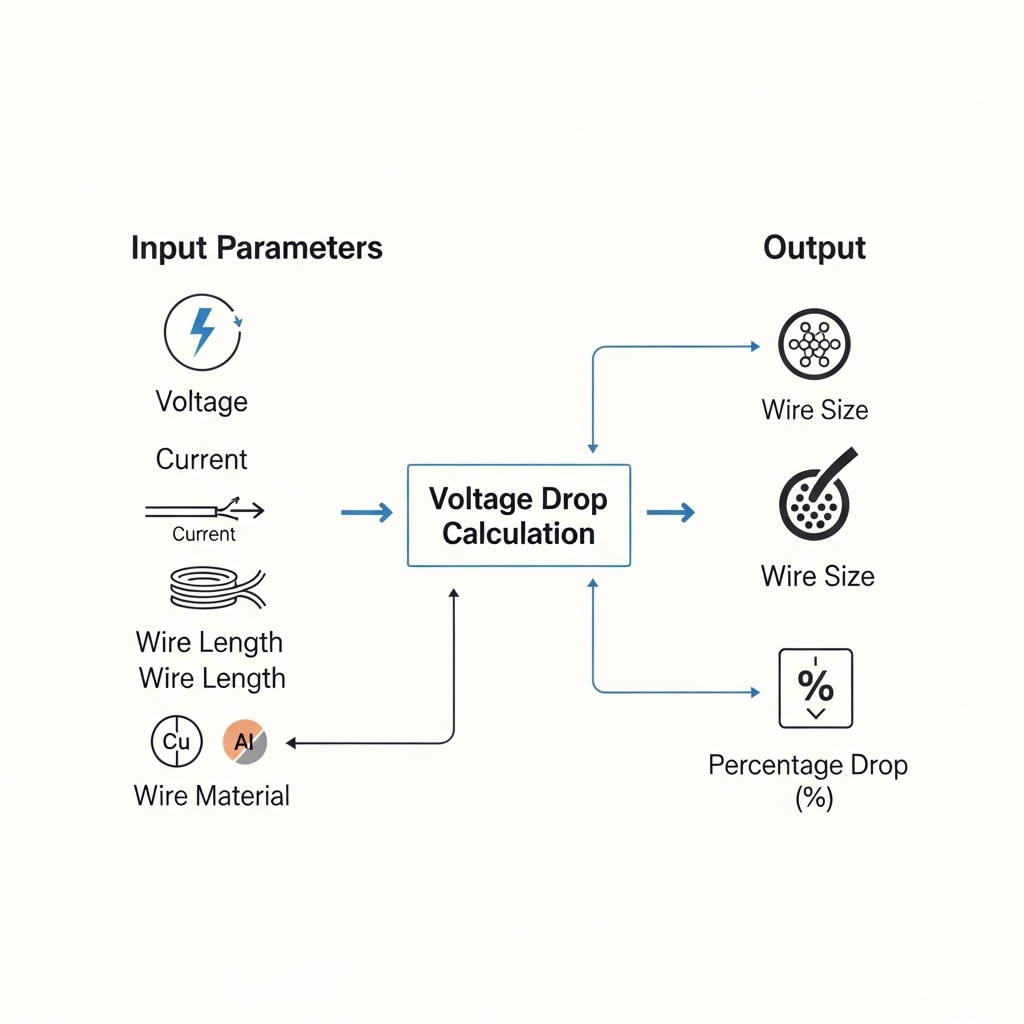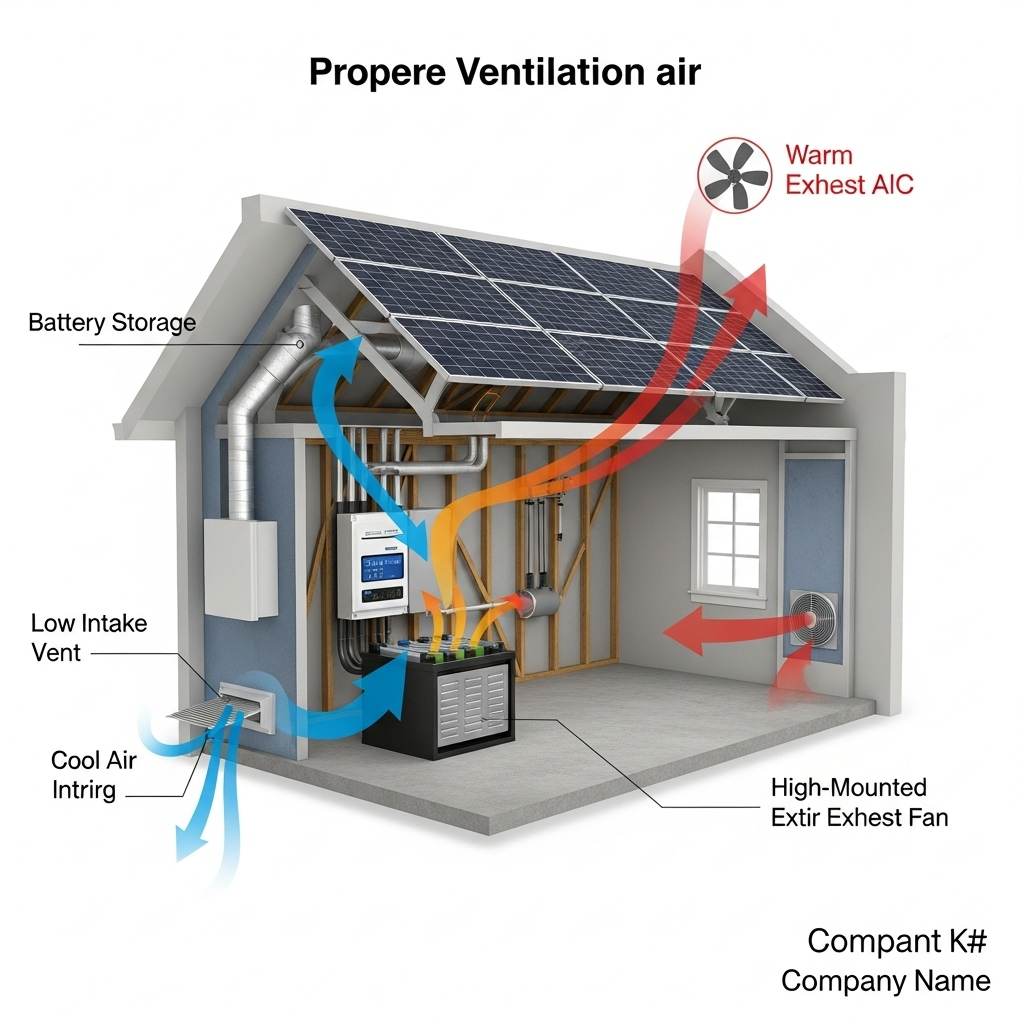An inverter is the heart of any solar energy system, converting direct current (DC) from your panels and batteries into alternating current (AC) for your home. But this conversion process generates significant heat. When an inverter is placed too close to your energy storage system (ESS), this waste heat can compromise battery health, reduce performance, and shorten its operational life. Thoughtful inverter placement is a foundational aspect of effective ESS thermal management.
Why Inverter Heat is a Critical Factor for Your ESS
The heat an inverter produces is not a minor detail; it's a primary operational byproduct that directly impacts the most sensitive and expensive part of your system: the battery. Understanding this relationship is the first step toward a more reliable and long-lasting energy storage solution.
The Physics of Inverter Heat Generation
No electronic device is 100% efficient, and inverters are no exception. During the DC-to-AC conversion, a portion of the energy is lost as heat. A modern hybrid inverter can generate several hundred watts of thermal energy under load. This is equivalent to leaving a classic incandescent light bulb constantly running inside your utility closet. Without a clear path to dissipate, this heat builds up quickly, warming the surrounding components.
How Excess Heat Degrades Battery Health
Lithium iron phosphate (LiFePO4) batteries, known for their safety and longevity, are still sensitive to temperature. Operating them consistently above their ideal temperature range (typically around 25°C or 77°F) accelerates the chemical reactions inside. This leads to faster capacity degradation and a shorter overall lifespan. Elevated temperatures force the battery's internal management system to work harder, potentially derating performance to protect itself and, in extreme scenarios, increasing safety risks.
The Compounding Effect in Enclosed Spaces
Placing an inverter and battery bank together in a small, poorly ventilated cabinet creates a dangerous feedback loop. The inverter heats the ambient air. The battery, in turn, absorbs this heat, raising its own internal temperature. This forces the battery's cooling mechanism, if it has one, to contend with both its own operational heat and the external heat from the inverter. The result is a system constantly battling elevated temperatures, undermining both efficiency and durability.
Strategic Placement: Separating Heat Sources from Sensitive Components
The most effective strategy to manage inverter heat is to physically isolate it from your battery system. This approach relies on simple physics and smart design to create a stable operating environment for your ESS.
The Ideal Separation Distance
While specific requirements vary by manufacturer, a general guideline is to maintain at least 12 to 24 inches (30 to 60 cm) of separation between the inverter and the battery cabinet. This distance prevents the direct radiant heat from the inverter's chassis from affecting the battery. Always mount the inverter beside or above the battery, never directly on top of the battery enclosure where it can trap heat.
Leveraging Natural Convection
Heat naturally rises. By mounting the inverter higher than the battery bank, you use this principle, known as the stack effect, to your advantage. The warm air exhausted from the inverter will rise and move away from the battery system, allowing cooler, denser air to remain around the batteries. This passive cooling strategy is cost-free and highly effective for ESS heat dissipation.
Considering Ambient Room Temperature
The location of your system plays a significant role. Installing your ESS and inverter in a naturally cool and stable environment, like a basement, provides a much better starting point than a garage that bakes in the afternoon sun or a poorly insulated attic. A lower ambient temperature reduces the total thermal load on the entire system.
Optimizing Airflow and Ventilation Around the Inverter
Proper placement is only part of the solution. You must also ensure the inverter can breathe. Restricted airflow turns an efficient device into a localized heater, undermining your entire thermal management plan.
Ensuring Adequate Clearance
Inverter manufacturers provide specific clearance requirements in their installation manuals for a reason. The cooling fins and fans built into the inverter need unobstructed space to draw in cool air and exhaust hot air. Adhering to these minimum distances—on the top, bottom, and sides—is crucial for the inverter to cool itself effectively.
Active and Passive Ventilation Strategies
For most installations, passive ventilation through vents and proper spacing is sufficient. However, in confined spaces like a small closet or in hotter climates, active ventilation may be necessary. This involves using one or more fans to create a consistent air exchange, pulling cool air in from a low point and exhausting warm air from a high point. This mirrors principles used in large-scale energy systems. As noted in the IRENA report, Innovation outlook: Thermal energy storage, thermal energy storage (TES) is used to enhance efficiency and flexibility in district heating and cooling, showing how managed thermal systems improve outcomes. Similarly, managing the micro-climate of your ESS enclosure is key to its performance.
Avoiding Airflow Obstructions
A common mistake is to store boxes, tools, or other items in the required clearance zones around an inverter. Blocking vents or placing objects on top of the unit traps heat, forcing the internal fans to run constantly and reducing the component's lifespan. Keep the area around your power electronics clear at all times.
Advanced Considerations for Inverter Placement
Beyond the basics of separation and airflow, a few other factors can influence the long-term health and performance of your system.
Integrated vs. Separate Components
Some all-in-one ESS units combine the inverter, charger, and battery into a single cabinet. In these systems, manufacturers have already engineered specific internal airflow channels to manage heat. It is vital not to block any vents on these integrated units. With modular systems, where the inverter and battery are separate, you have greater control over placement, but also a greater responsibility to get it right.
Shielding from Direct Solar Radiation
Never install an inverter in a location where it will be exposed to direct sunlight. The solar gain on the inverter's chassis adds a significant external heat load, compounding the internal heat it already generates. This can easily push the unit beyond its optimal operating temperature range.
The Role of Thermal Monitoring
For ultimate peace of mind, consider placing temperature sensors near both the inverter and the battery bank. Monitoring this data can provide valuable insight into how well your thermal management strategy is working. It allows you to identify potential issues before they lead to premature equipment failure. Effective management of these thermal loads ensures the system can deliver power when needed, a concept that scales up to grid-level applications where, according to IRENA's research, TES helps mitigate fluctuations in supply from renewable sources.
A Smarter Approach to System Longevity
Optimizing your inverter placement is one of the most impactful, yet lowest-cost, actions you can take to protect your energy storage investment. By separating heat sources from temperature-sensitive batteries, ensuring robust airflow, and selecting a suitable location, you create an environment where every component can operate efficiently. This proactive approach to thermal management pays dividends in improved performance, enhanced safety, and a significantly longer system lifespan. Just as thermal storage can shift cooling loads to off-peak times to reduce grid congestion, as mentioned by IRENA, smart placement shifts the thermal load away from your battery, securing its health for years to come.
Frequently Asked Questions
How much space should I leave around my inverter?
Always consult the manufacturer's installation manual first. As a general rule, aim for at least 12-24 inches (30-60 cm) of clear, unobstructed space on all sides, especially above and below, to facilitate proper airflow.
Can I install my inverter and battery in the same cabinet?
This is generally not recommended unless the cabinet is specifically designed for this purpose with separate compartments and dedicated active ventilation. Placing a heat-generating inverter in a sealed box with a temperature-sensitive battery can lead to premature aging and performance loss. According to an analysis on solar storage performance, maintaining optimal battery temperature is paramount for longevity.
Is it better to mount the inverter above or below the battery?
It is always better to mount the inverter above or to the side of the battery. Heat rises naturally. Placing the inverter below the battery would cause its waste heat to flow directly up and onto the battery bank, increasing its operating temperature.
Does the location within a house matter for inverter placement?
Absolutely. A cool, dry basement is often a better choice than a hot, unventilated attic or a garage that gets direct sun in the afternoon. A lower ambient starting temperature reduces the overall thermal management challenge for your entire system.





Leave a comment
All comments are moderated before being published.
This site is protected by hCaptcha and the hCaptcha Privacy Policy and Terms of Service apply.